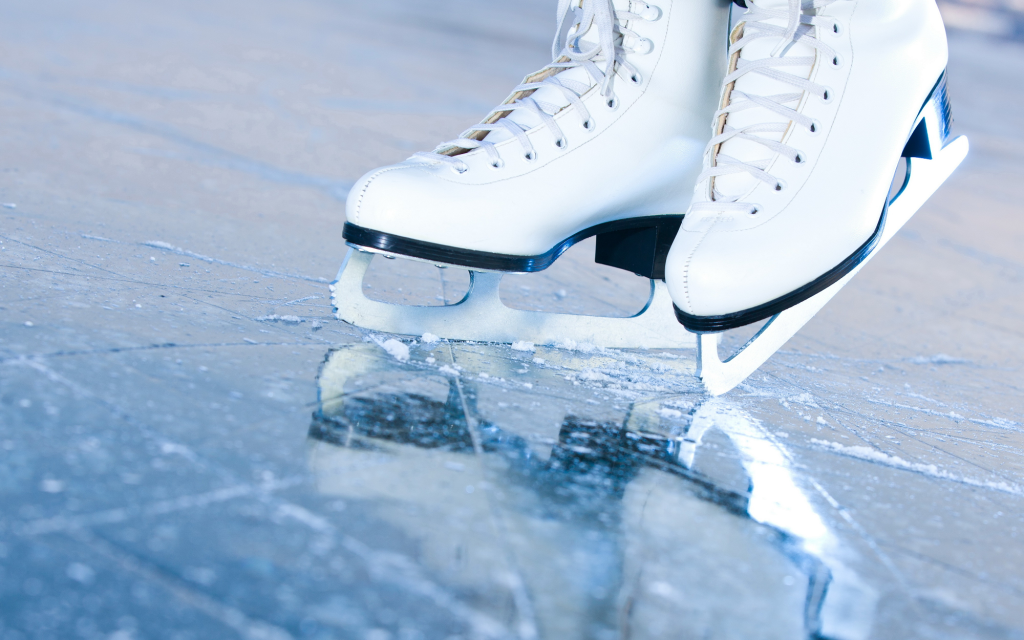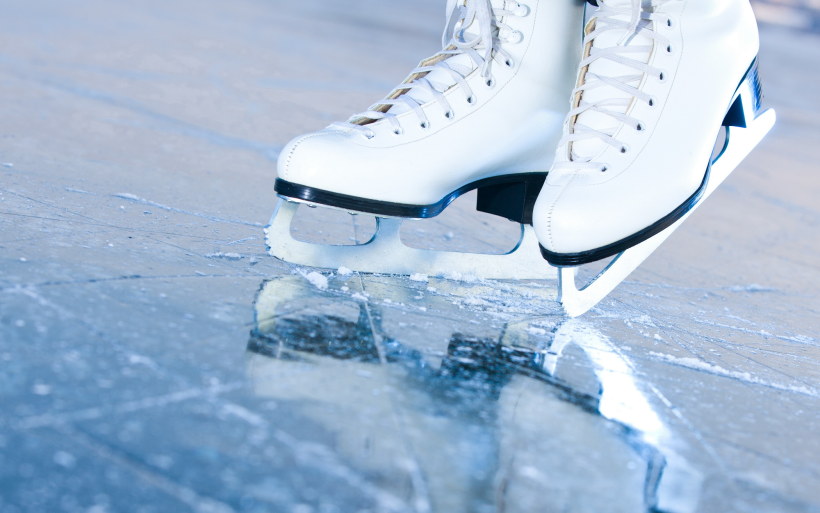
If you’ve ever been ice skating, chances are you probably found yourself falling on your behind for most of the day, your first time out (& let’s be honest, probably for a lot longer after that). The following thought probably crossed your mind:
Why in the world is this so slippery? Wait a minute…(you thought) of course it’s slick it’s ice, duh!
Well you were right…you were wrong…a little bit of both, in fact. You see, the reason that while ice skating, you are able to glide across the ice (or, unfortunately slip & fall) so easily is not so clear cut. The theories that provide explanation for this phenomenon are the subject of a long-standing debate. It was originally thought (& is still believed by many) that the large pressure associated with the blade of the skate on the ice is responsible for the slick interaction. Because you weigh a good amount & the contact area of the blade on the ice is very small, you apply a large amount of pressure to the ice. It was reasoned that this pressure caused the ice to melt and thus provide liquid lubrication through “pressure melting” for the blades of the skate. Because the change in state from solid ice to liquid water is a function of pressure & temperature, for a constant temperature, increasing pressure will cause the ice to melt sooner. However, following this logic, at the cold temperatures (usually a few degrees below freezing) of the ice in ice rinks, the amount of pressure required proves implausible. Cue the next theory: “friction heating”. It has been postulated that the friction between the blade & the ice provided enough heat transfer to melt the ice to provide the lubrication…again, this was debunked for below-0°C temperatures for being unrealistic. With scientists & engineers alike scratching their heads, the race was off to the laboratory, where they eventually uncovered the truth: the upper regions of the ice have far weaker inter-molecular bonding than the lower bulk of ice, allowing surface ice molecules to flow nearly freely with the blades without readily changing to liquid, thus providing a state of mixed-film lubrication, somewhere between boundary lubrication (solid asperities rubbing against each other in full dry contact) & hydrodynamic lubrication (complete surface separation by the fluid lubrication film). So, as it turns out, the answer to the question of why the ice is so slick beneath your skates is not quite as egocentric as we scientists & engineers had initially imagined…while “pressure melting” & “friction heating” certainly help to provide smoother gliding across the surface of the ice, the main underlying truth is that it is much less about what we are doing to the ice & more about the ice itself!

